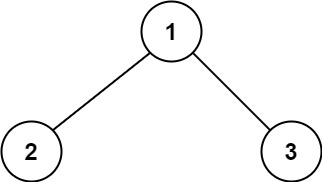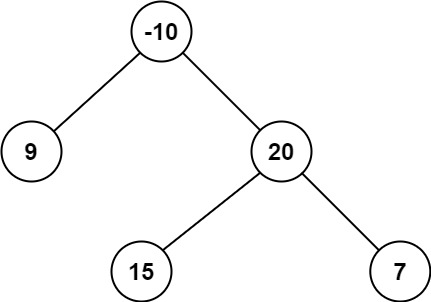Binary tree maximum path sum
# Definition for a binary tree node.
# class TreeNode:
# def __init__(self, val=0, left=None, right=None):
# self.val = val
# self.left = left
# self.right = right
class Solution:
def maxPathSum(self, root: Optional[TreeNode]) -> int:
res = [-math.inf]
def helper(node):
if not node:
return 0
left = max(helper(node.left), 0)
right = max(helper(node.right), 0)
res[0] = max(
res[0],
left + right + node.val
)
return max(
node.val + right,
node.val + left
)
helper(root)
return res[0]
# class Solution:
# def max_path_sum(self, root: Optional[TreeNode]) -> int:
# max_path = -float('inf')
# # post order traversal of subtree rooted at `node`
# def gain_from_subtree(node: Optional[TreeNode]) -> int:
# nonlocal max_path
# if not node:
# return 0
# # add the gain from the left subtree. Note that if the
# # gain is negative, we can ignore it, or count it as 0.
# # This is the reason we use `max` here.
# gain_from_left = max(gain_from_subtree(node.left), 0)
# # add the gain / path sum from right subtree. 0 if negative
# gain_from_right = max(gain_from_subtree(node.right), 0)
# # if left or right gain are negative, they are counted
# # as 0, so this statement takes care of all four scenarios
# max_path = max(max_path, gain_from_left + gain_from_right + node.val)
# # return the max sum for a path starting at the root of subtree
# return max(
# gain_from_left + node.val,
# gain_from_right + node.val
# )
# gain_from_subtree(root)
# return max_path
Binary Tree Maximum Path Sum
A path in a binary tree is a sequence of nodes where each pair of adjacent nodes in the sequence has an edge connecting them. A node can only appear in the sequence at most once. Note that the path does not need to pass through the root.
The path sum of a path is the sum of the node's values in the path.
Given the root of a binary tree, return the maximum path sum of any non-empty path.
Example 1:

Input: root = [1,2,3] Output: 6 Explanation: The optimal path is 2 -> 1 -> 3 with a path sum of 2 + 1 + 3 = 6.
Example 2:

Input: root = [-10,9,20,null,null,15,7] Output: 42 Explanation: The optimal path is 15 -> 20 -> 7 with a path sum of 15 + 20 + 7 = 42.
Constraints:
- The number of nodes in the tree is in the range
[1, 3 * 104]. -1000 <= Node.val <= 1000
